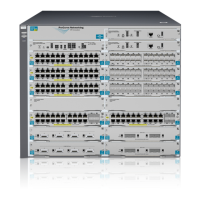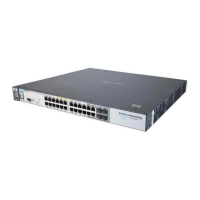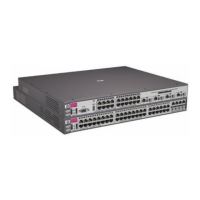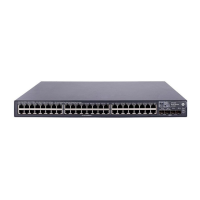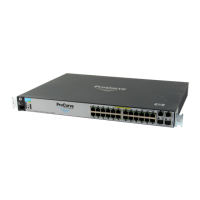C-1
Cabling and Technology
Information
C
Cabling and Technology Information
This appendix includes switch connector information and network cable
information for cables that should be used with the HP ProCurve 3500, 3500yl
and 6200yl switches, including minimum pin-out information and
specifications for twisted-pair cables.
Note Incorrectly wired cabling is the most common cause of problems for LAN
communications. HP ProCurve recommends that you work with a qualified
LAN cable installer for assistance with your cabling requirements.
Table 1. Cabling Specifications
Twisted-pair copper
10 Mbps Operation Category 3, 4 or 5, 100-ohm unshielded twisted-pair (UTP) or
shielded twisted-pair (STP) cable, complying with IEEE 802.3
10BASE-T specifications.
100 Mbps Operation Category 5, 100-ohm UTP or STP cable, complying with IEEE
802.3u 100BASE-TX specifications.
1000 Mbps Operation Category 5, 100-ohm 4-pair UTP or STP cable, complying with IEEE
802.3ab 1000BASE-T specifications—Category 5e or better is
recommended. See Note on 1000BASE-T Cable Requirements
below.
Twinaxial copper
CX4 cables Twinaxial cables complying with IEEE 802.3ak 10GBASE-CX4
specifications.
Direct attach cables
One-piece devices consisting of a cable with SFP+ connectors
permanently attached to each end, complying with SFF 8431 SFP+
specifications.
Multimode fiber
62.5/125 m or 50/125 m (core/cladding) diameter, low metal
content, graded index fiber-optic cables, complying with the
ITU-T G.651 and ISO/IEC 793-2 Type A1b or A1a standards
respectively.
1
Single mode fiber
9/125 m (core/cladding) diameter, low metal content fiber-optic
cables, complying with the ITU-T G.652 and
ISO/IEC 793-2 Type B1 standards.
1
A mode conditioning patch cord may be needed for some Gigabit-LX and 10-Gigabit LRM installations.
See “Mode Conditioning Patch Cord” on page C-4 for more information.

